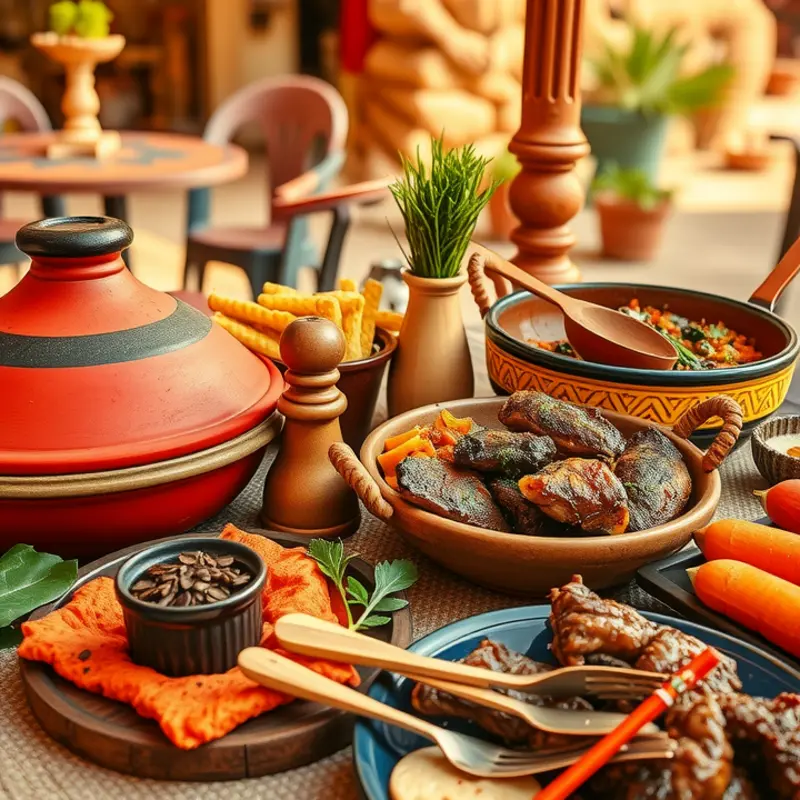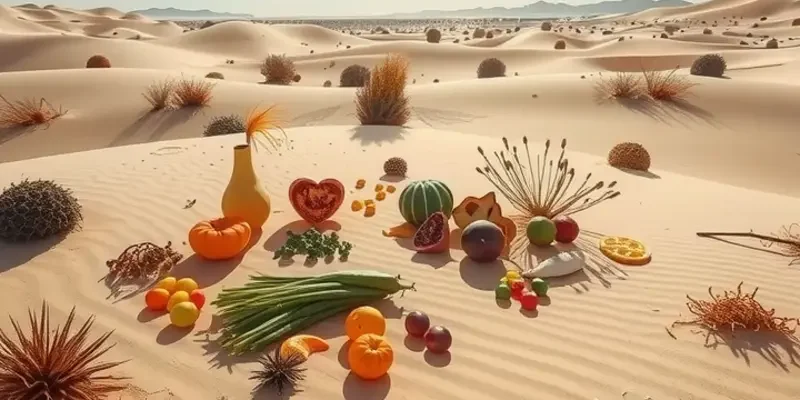Desert climates, characterized by their extreme temperatures and sparse vegetation, have shaped unique culinary traditions across the globe. From the Middle Eastern deserts to the African Sahel, these regions have developed remarkable cooking techniques and delectable dishes that maximize available resources. This venture into arid culinary worlds opens a window into the ingenuity and resilience of communities that thrive in harsh environments, revealing flavors that harmonize with the land’s offerings.
Age-Old Techniques: The Art of Desiccation and Preservation

In the unforgiving terrains of desert landscapes, where temperatures soar and humidity plummets, culinary traditions have evolved into ingenious methods for food preservation. Among these, desiccation stands as a testament to human adaptability. Drying is perhaps one of the oldest techniques, an art perfected over centuries by communities who relied on it for sustenance. The Mediterranean, with its blend of varied cultures, offers a treasure trove of examples. Here, grapes transform into raisins and sun-dried tomatoes capture summer’s essence, their flavors intensifying under the sun. This technique ensures nutrients and flavors remain intact, while minimizing spoilage.
Further south, in the Sahara, fermentation emerges as a crucial preservation method. This process not only extends the life of food but also enhances its nutritional profile, creating unique taste profiles cherished in local dishes. Fermented camel’s milk, known as ‘gariss,’ is a staple. Its tangy texture provides refreshments amidst the arid heat, embodying a rich tradition of fermentation that balances flavor and preservation.
Smoking, another time-honored preservation technique, brings to life complex aromas and flavors. In regions with limited resources, smoking fish or meat not only preserves but also offers a depth of flavor that complements the sparse spice palette available. Techniques vary from one desert to another, each influenced by available materials and cultural exchanges, as seen in the trade routes spanning Morocco to the Arabian Peninsula.
Such ancient techniques continue to inspire modern culinary practices. The slow dehydration of fruits harnesses traditional wisdom while aligning with contemporary health trends. Fermented foods are now pillars of gourmet menus worldwide, celebrated not just for their unique flavors but for their probiotic benefits. These traditional methods showcase the harmony between innovation and heritage, offering delicious pathways to honoring cultural history. Want to explore eco-smart storage methods for preserved foods? Visit this guide on eco-smart kitchen storage for more insights.
Despite technological advances, these ancient methods remain relevant. The art of preservation in desert climates is more than survival; it’s a celebration of flavor, resilience, and cultural identity that continues to evolve, delighting palates across the globe while preserving the stories and traditions of those who mastered these lifelines in arid times.
Flavors of Resilience: Culinary Highlights from Desert Cuisines

Desert regions across the globe have cultivated unique culinary practices, turning scarcity into flavor masterpieces. Take, for example, North Africa’s vibrant tagines. These slow-cooked stews, rich with spices, are emblematic of Morocco’s culinary ingenuity. Infused with cumin, coriander, and saffron, tagines transform humble ingredients like root vegetables and preserved lemons into an unforgettable feast. Historical accounts suggest the tagine’s conical shape aids in moisture retention—a critical adaptation to arid environments.
In the vast Sahel region, the simplicity of mafe, a savory peanut stew, highlights how local staples like groundnuts and meats create dishes brimming with warmth and sustenance. This dish, often cooked over an open flame, serves as a reminder of community gatherings, where meals are shared and stories unfold. The prevalence of peanuts in mafe connects to colonial trade activities that integrated groundnuts into regional cuisine.
To the east, the Arabian deserts present a totally different, yet equally expressive spectrum of flavors. Here, the roasting of meats, such as the renowned shanina, showcases a mastery of minimalism. This dish focuses on subtly spiced lamb or goat, often marinated with a fusion of garlic, onions, and yogurt. The method of slow-roasting in a traditional, underground oven enriches the meat with a distinct smokiness.
Across these desert landscapes, spices and local ingredients do more than flavor food—they narrate histories. Cumin and coriander, for instance, appear in both Moroccan and Sahelian dishes, a testament to the expansive reach of historic spice routes. Moreover, homemade flatbreads, ubiquitous in nearly all desert cuisines, serve as both culinary canvases and utensils, echoing a spirit of practicality born of necessity.
Each meal tells tales beyond taste. In the endless expanse, where water is scarce and life is hard, these dishes symbolize resilience and creativity. Stories abound of Bedouin travelers sharing shawarma by fires under starlit skies, and of Sahelian families sitting together during festivals, relishing mafe with rice. These stories foster a sense of identity and belonging that is as rich as the flavors savored.
In a world where fast pace often prevails over tradition, revisiting these culinary practices underscores the brilliance of making much from little. The knowledge imparted through generations teaches valuable lessons on resourcefulness and mindfulness in food preparation. For those wanting to replicate the heart of these dishes at home, starting with a food storage guide to maintain spice freshness is invaluable. Visit this eco-smart kitchen storage guide for tips to preserve the essence of ingredients crucial to these resilient dishes.
From tagines to roasted meats, the cuisines of desert regions depict survival’s culinary art form—a perpetual dance with nature’s harsh, yet oddly nurturing embrace.
Final words
Culinary traditions in desert climates provide a fascinating glimpse into how communities adapt and thrive in challenging environments. The age-old techniques of preservation and the rich flavors of unique dishes tell tales of resilience and resourcefulness. As global food enthusiasts, embracing and learning about these culinary practices not only enriches our palates but also connects us to the cultural narratives behind every meal. So, next time you savor a dish inspired by arid landscapes, remember the history and creativity embedded within its flavors.








